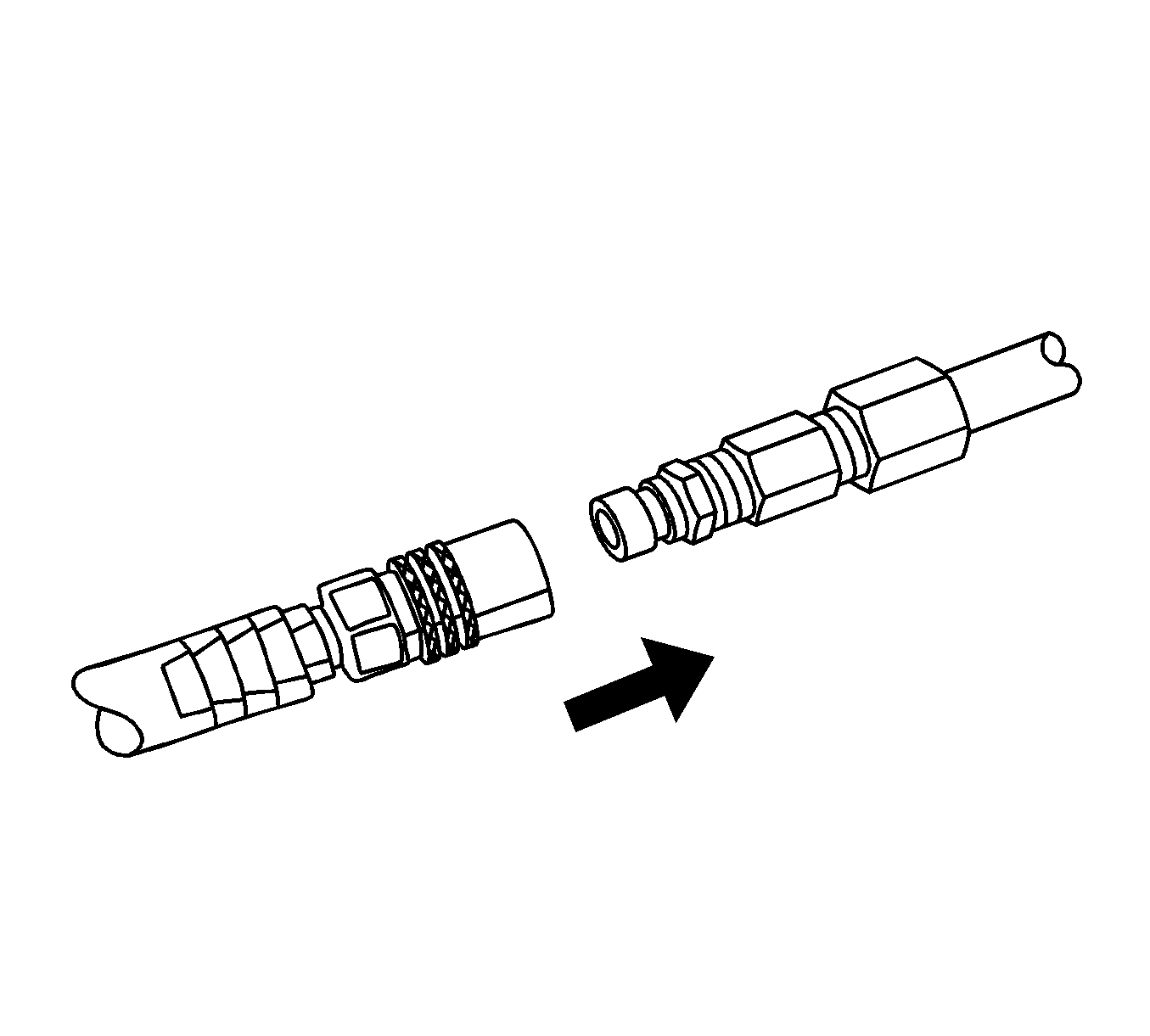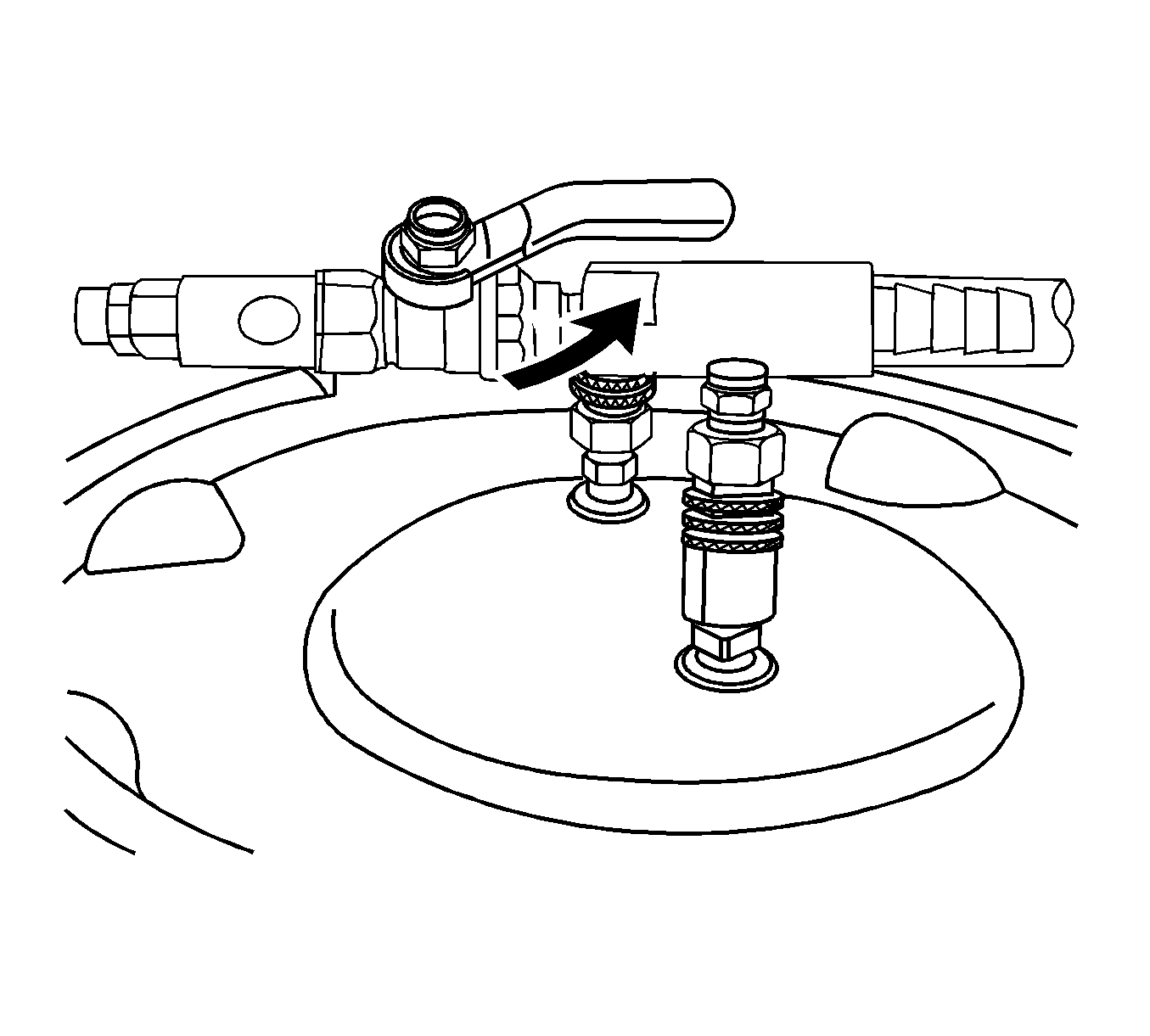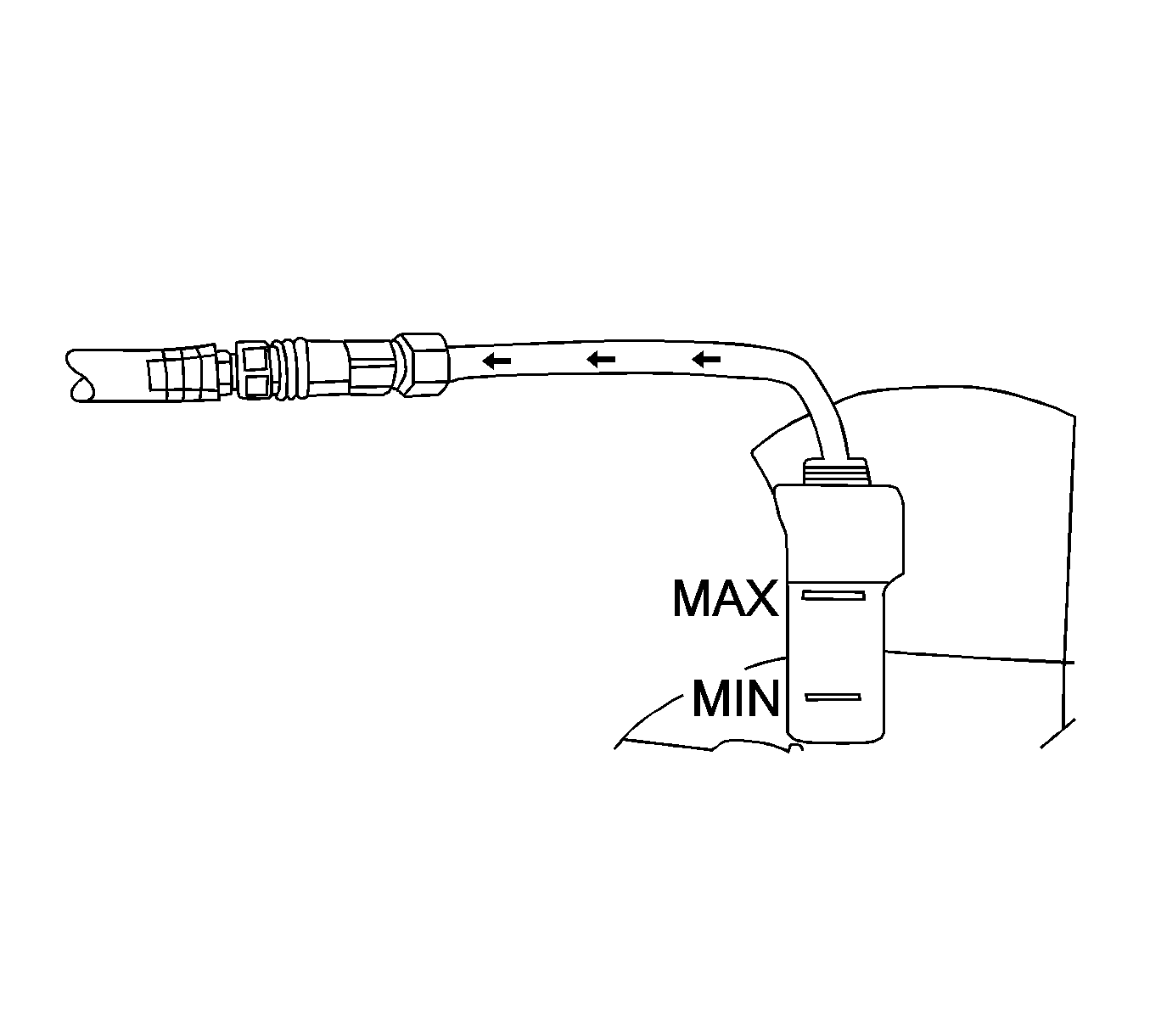Cooling System Draining and Filling Static Fill-LE5, LAT
Draining Procedure
- Place the coolant container under the radiator drain cock located at the bottom of the right radiator end tank.
- Open the drain cock and drain the coolant. A small amount of coolant will drain from the system.
- Remove the surge tank cap from the surge tank and the coolant will drain from the system.
- For LE5 and LAT vehicles, if the engine block needs to be drained, a drain bolt is located near the bottom of the water pump assembly.
- Inspect the coolant.
- Follow the appropriate procedure based on the condition of the coolant.
Warning: In order to avoid personal injury, do not remove the cap or open the cooling system drains from a hot system. Allow the system to cool first.
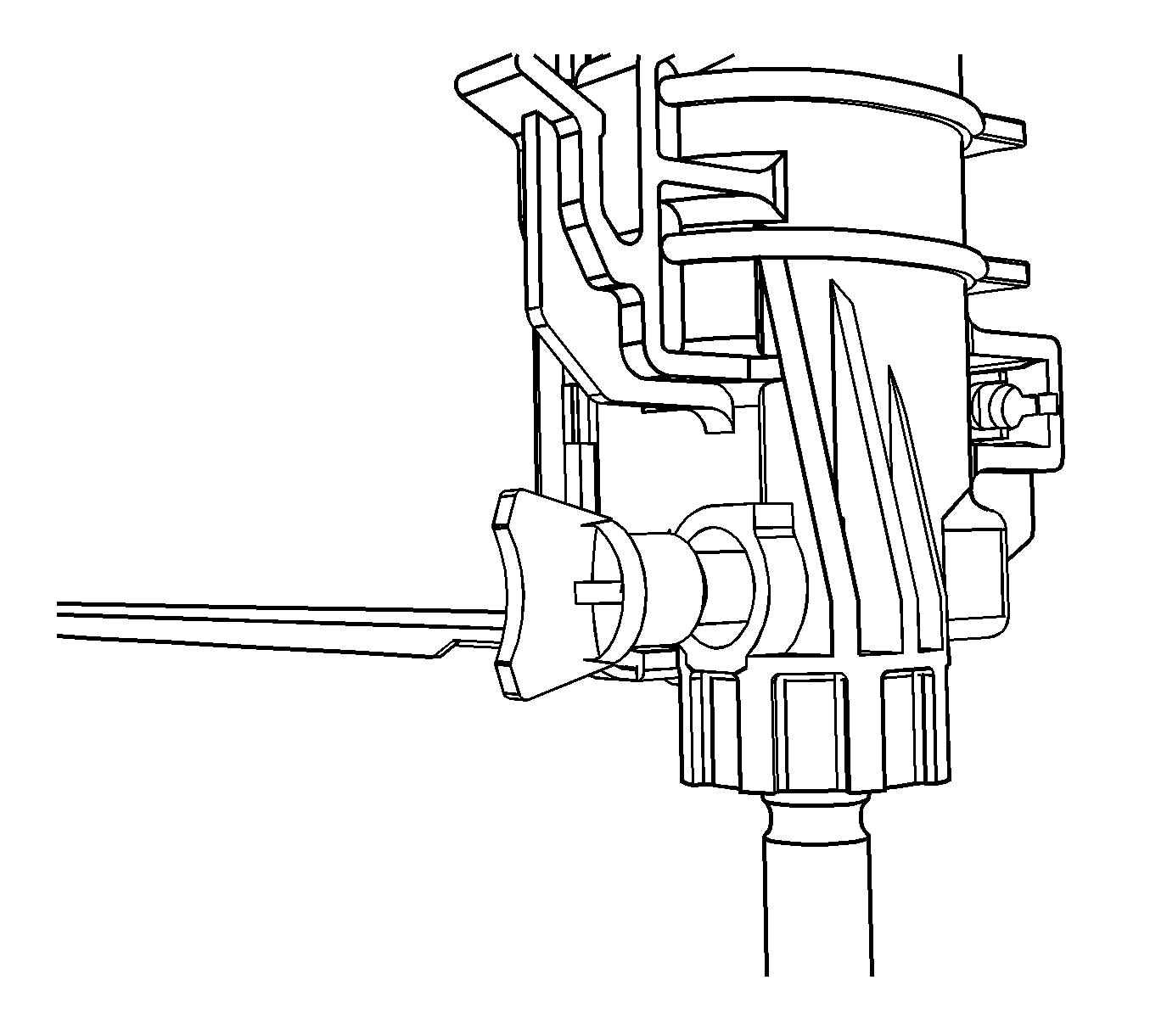
Note: A 7.6 liter (8 qt) coolant container will be needed.

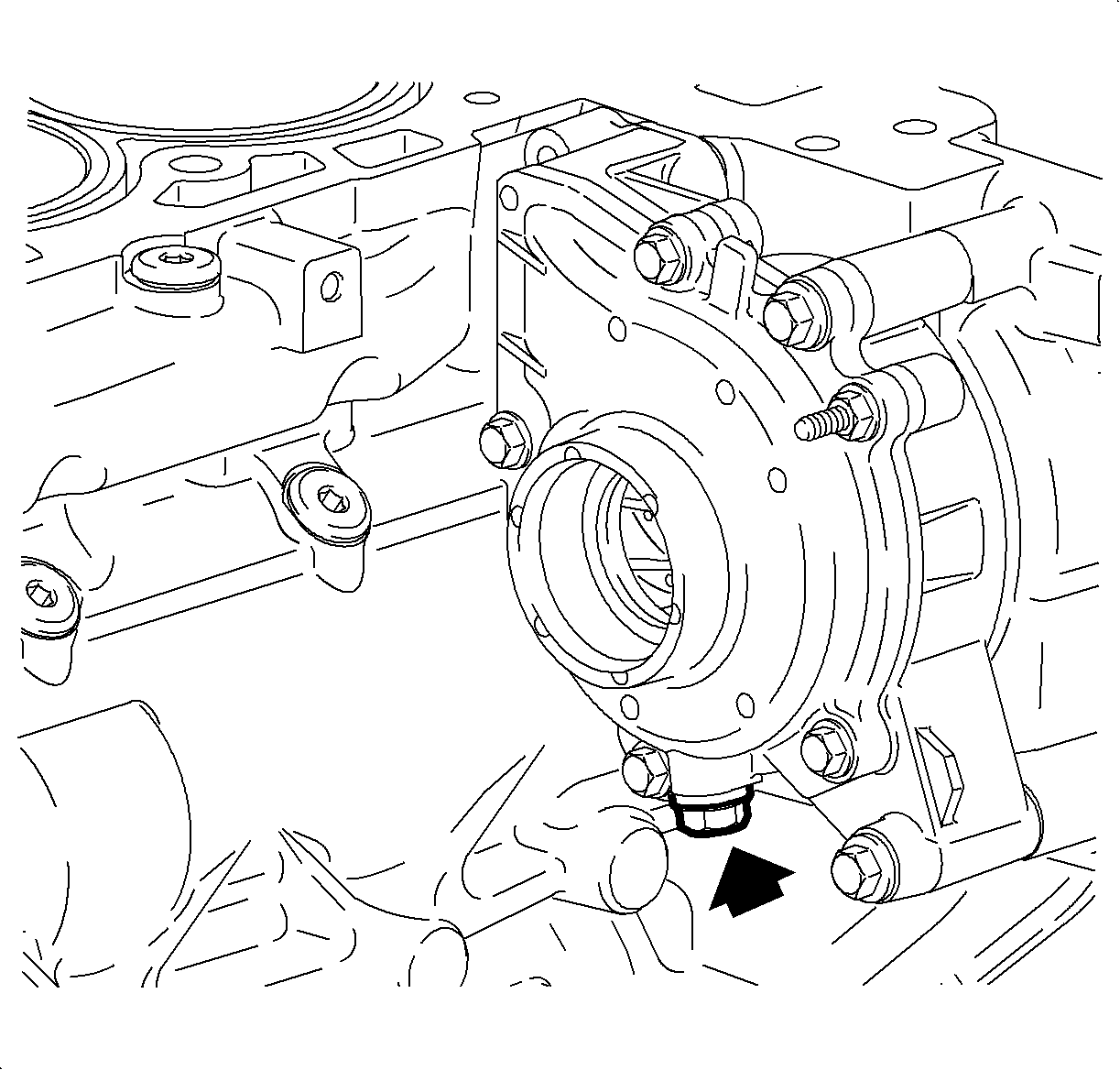
| • | Normal in appearance--follow the filling procedure. |
| • | Discolored--follow the flush procedure. Refer to Coolant System Flushing. |
Filling Procedure
- Slowly add a mixture of 50/50 DEX-COOL antifreeze and clean water to the coolant surge tank. Fill the cooling system as indicated below:
- Start the engine and check for leaks.
- Run the engine and cycle the vehicle from idle to 3,000 RPM in 30 second intervals until the engine cooling fan comes ON, the engine cooling fan turns ON at approximately 102°C (216°F). Repeat this process twice before the engine is turned OFF.
- Return the engine to idle, and idle for 30 seconds, then turn the engine OFF.
- Allow the vehicle to cool, before adding additional coolant.
- Add additional coolant to the surge tank until the level is approximately 13 mm (0.5 in) above the surge tank seam.
- Install the coolant surge tank cap.
Caution: All entrapped air must be purged from the powertrain cooling system before the final coolant level can be determined. Proper coolant level is critical to avoid engine damage.
Note: The vehicle must be level when filling the cooling system.
| • | For LE5/LAT vehicles when the engine block is not drained, add 3.5 liters (3.7 qts) |
| • | For LE5/LAT vehicles when the engine block is drained, add 6 liters (6.3 qts) |
Note: The level in the surge tank will return into the cold fill range once the vehicle cools.
Cooling System Draining and Filling Static Fill-LY7
Special Tools
J 26568 Coolant and Battery Fluid Tester
Draining Procedure
Warning: With a pressurized cooling system, the coolant temperature in the radiator can be considerably higher than the boiling point of the solution at atmospheric pressure. Removal of the surge tank cap, while the cooling system is hot and under high pressure, causes the solution to boil instantaneously with explosive force. This will cause the solution to spew out over the engine, the fenders, and the person removing the cap. Serious bodily injury may result.
- Unscrew the surge tank cap to remove vacuum when draining coolant.
- Raise the vehicle. Refer to Lifting and Jacking the Vehicle.
- Place a container under the radiator drain.
- Unscrew the radiator drain plug until coolant flows out the radiator drain.
- If a complete block drain is required, remove the coolant drain plugs. Refer to Engine Block Disassemble for the 3.6L engine.
- Follow the appropriate procedure based on the condition of the coolant:
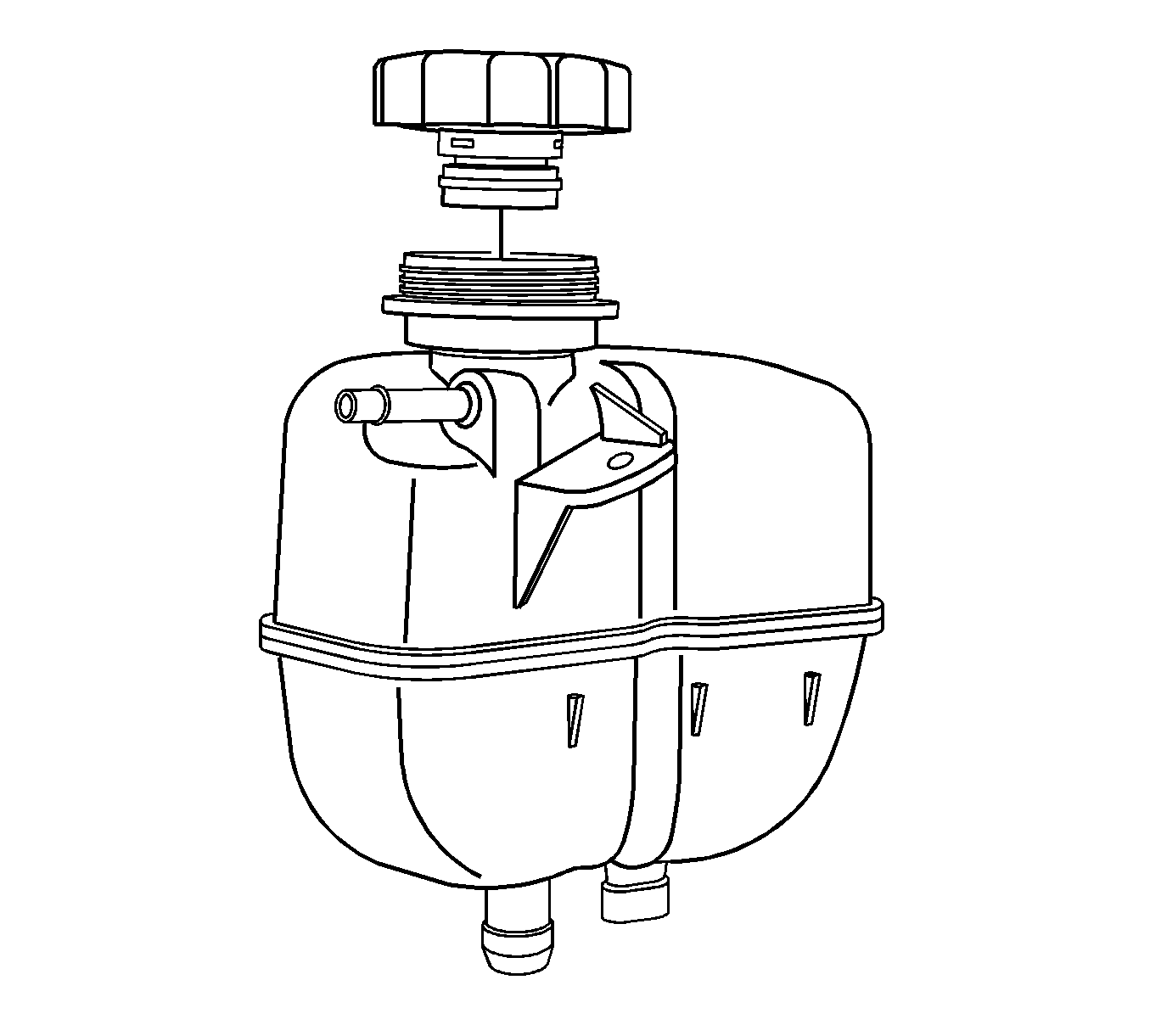
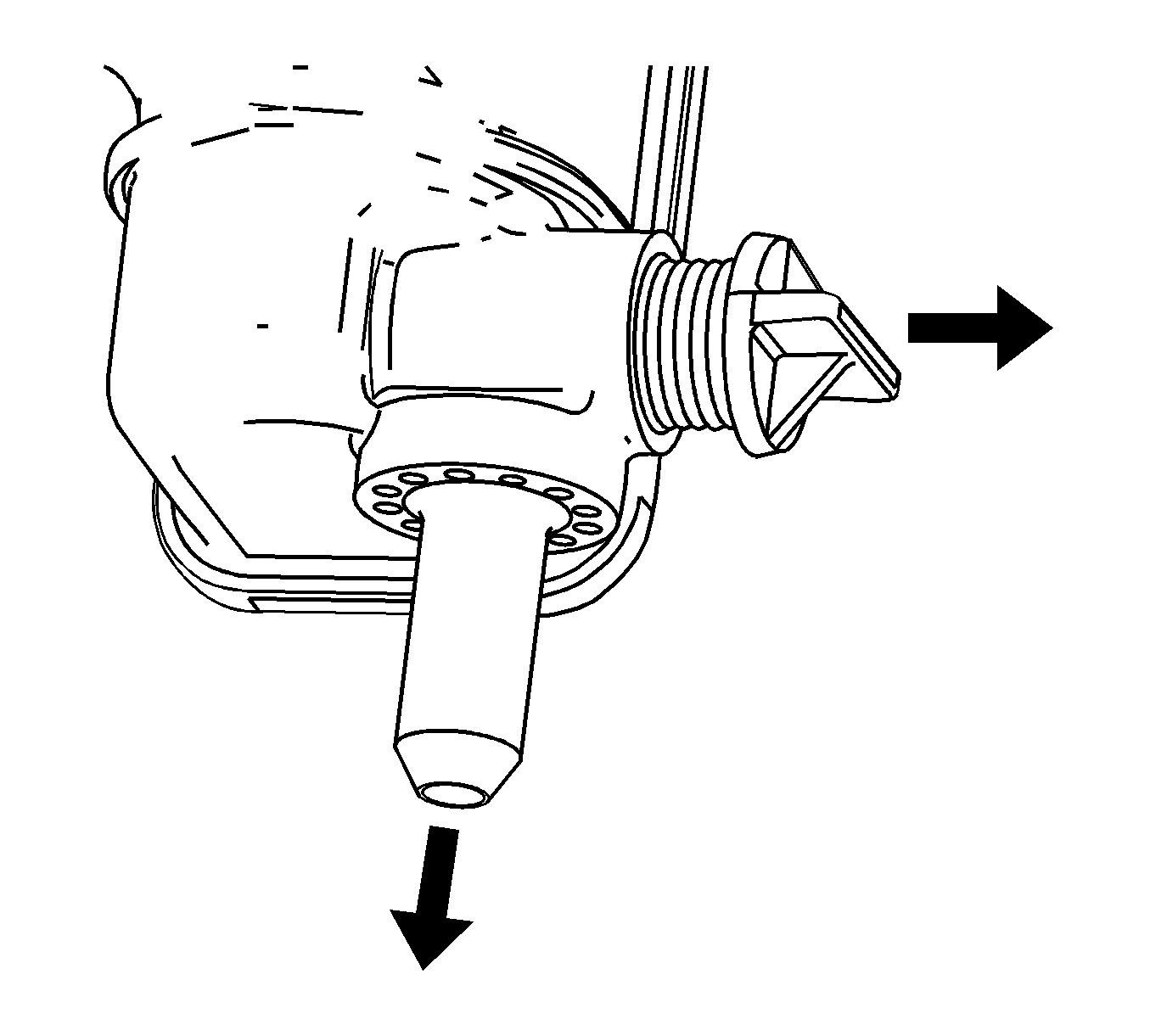
| • | Normal in appearance--Follow the filling procedure. |
| • | Discolored--Follow the flush procedure. Refer to Coolant System Flushing. |
Fill Procedure
- Install the engine block coolant drain plugs. Refer to Engine Block Assemble for the 3.6L engine.
- Close the radiator drain plug.
- Lower the vehicle.
- Vehicle should be level.
- Add a mixture of 50/50 DEX-COOL® antifreeze and clean drinkable water until the level stabilizes approximately 25.4 mm (1 in) above the weld seam on the surge tank. Refer to Approximate Fluid Capacities.
- Install the surge tank cap.
- Start the engine and run at 2,000 RPM until the engine cooling fans turn ON.
- Turn the engine OFF and allow the engine to cool down.
- Remove the surge tank cap.
- Refill to approximately 25.4 mm (1 in) above the weld seam on the surge tank.
- Install the surge tank cap.
- Inspect the concentration of the engine coolant using J 26568 tester .
- Install the surge tank cap.
- Rinse away any excess coolant from the engine and the engine compartment.
Caution: The procedure below must be followed. Improper coolant level could result in a low or high coolant level condition, causing engine damage.


Note: DO NOT exceed 2,200 RPM.
Cooling System Draining and Filling GE 47716
Special Tools
| • | GE-47716 Vac N Fill Coolant Refill Tool |
| • | J 26568 Coolant and Battery Fluid Tester |
| • | J 42401 Radiator Pressure Adapter |
Draining Procedure
- Unscrew the surge tank cap to remove vacuum when draining the coolant.
- Raise and support the vehicle. Refer to Lifting and Jacking the Vehicle.
- Place a container under the radiator drain.
- Unscrew the radiator drain plug until coolant flows out the radiator drain.
- If a complete block drain is required, remove the drain plugs. Refer to Draining Fluids and Oil Filter Removal for the 2.4L engine, or Engine Block Disassemble for the 3.6L engine.
- Follow the appropriate procedure based on the condition of the coolant.

| • | Normal in appearance--follow the filling procedure. |
| • | Discolored--follow the flush procedure. Refer to Coolant System Flushing. |
Vac N Fill Procedure
Note: To prevent boiling of the coolant/water mixture in the vehicles cooling system, do not apply vacuum to a cooling system above 49°C (120°F). The tool will not operate properly when the coolant is boiling.
If a complete engine block drain was required, install the engine block drain plugs. Refer to the appropriate procedure:
| • | Engine Block Assemble for the 2.4L engine |
| • | Engine Block Disassemble for the 3.6L engine |
- Install J-42401-2 adapter into the surge tank fill neck.
- Install J-42401-3 adapter to the surge tank fill neck.
- Attach the Vac N Fill cap to the J-42401-3 adapter .
- Attach the Vac N Fill cap to the vehicles coolant fill port.
- Attach the vacuum gage assembly to the Vac N Fill cap.
- Attach the fill hose to the barb fitting on the vacuum gage assembly.
- Pour the coolant mixture into the graduated reservoir.
- Place the fill hose in the graduated reservoir.
- Install the vacuum tank on the graduated reservoir with the fill hose routed through the cut-out area in the vacuum tank.
- Attach the venturi assembly to the vacuum tank.
- Attach a shop air hose to the venturi assembly.
- Attach the vacuum hose to the vacuum gage assembly and the vacuum tank.
- Open the valve on the venturi assembly. The vacuum gage will begin to rise and a hissing noise will be present.
- Continue to draw vacuum until the needle stops rising. This should be 610-660 mm Hg (24-26 in Hg).
- To aid in the fill process, position the graduated reservoir above the coolant fill port.
- Slowly open the valve on the vacuum gage assembly. When the coolant reaches the top of the fill hose, close the valve.
- Close the valve on the venturi assembly.
- If there is a suspected leak in the cooling system, allow the system to stabilize under vacuum and monitor for vacuum loss.
- Open the valve on the vacuum gage assembly. The vacuum gage will drop as coolant is drawn into the system.
- Once the vacuum gage reaches zero, close the valve on the vacuum gage assembly and repeat steps 11-17.
- Remove the J-42401-3 adapter from the surge tank fill neck.
- Remove J-42401-2 adapter from the surge tank fill neck.
- Detach the Vac N Fill cap from the vehicles coolant fill port.
- Add coolant to the system as necessary.
- Inspect the concentration of the coolant mixture using J 26568 tester .
- Detach the vacuum hose from the vacuum gage assembly.
- Attach the extraction hose to the vacuum hose.
- Open the valve on the venturi assembly to start a vacuum draw.
- Use the extraction hose to draw out coolant to the proper level.
- Install the surge tank cap.
- The vacuum tank has a drain valve on the bottom of the tank. Open the valve to drain coolant from the vacuum tank into a suitable container for disposal.
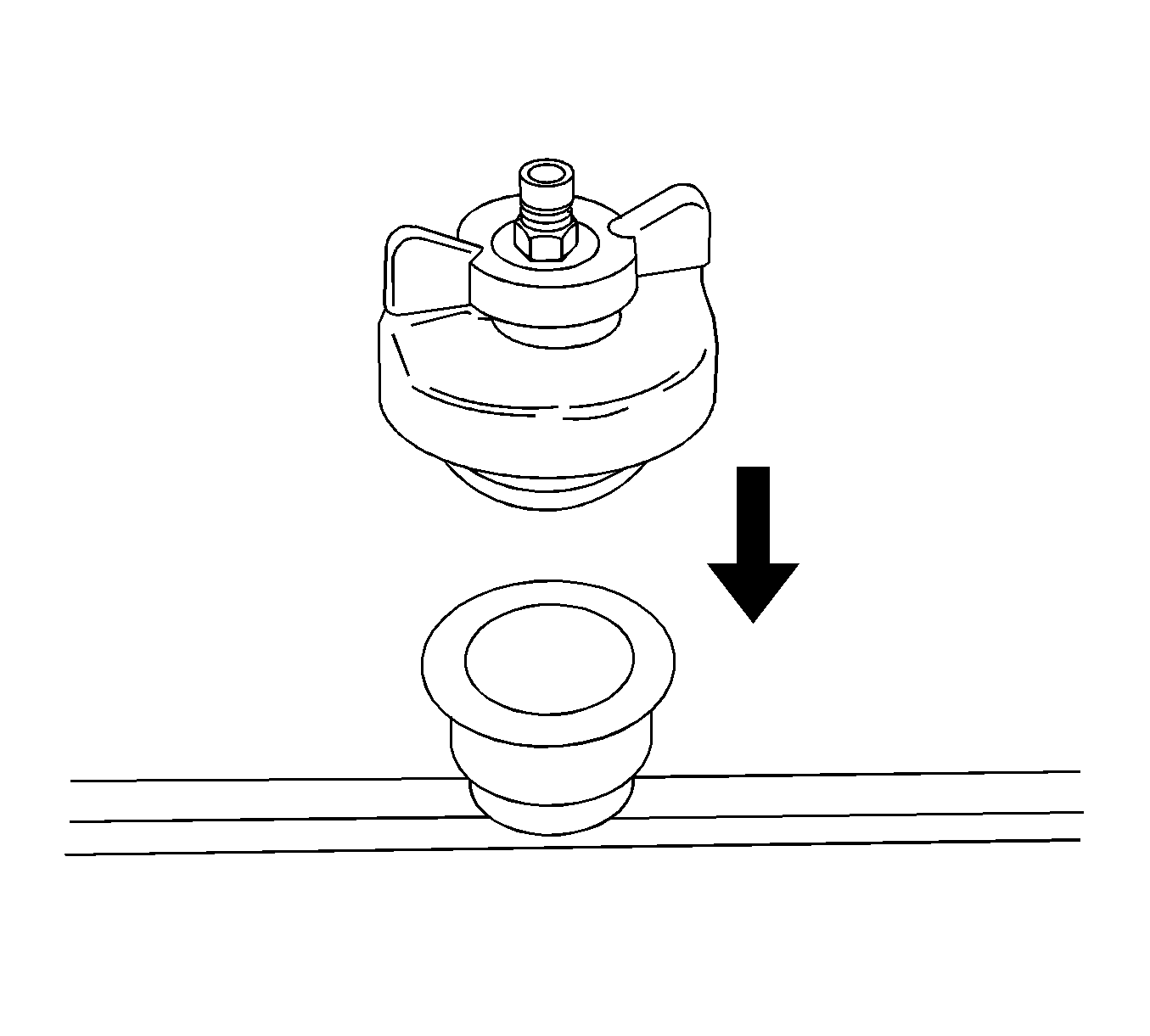
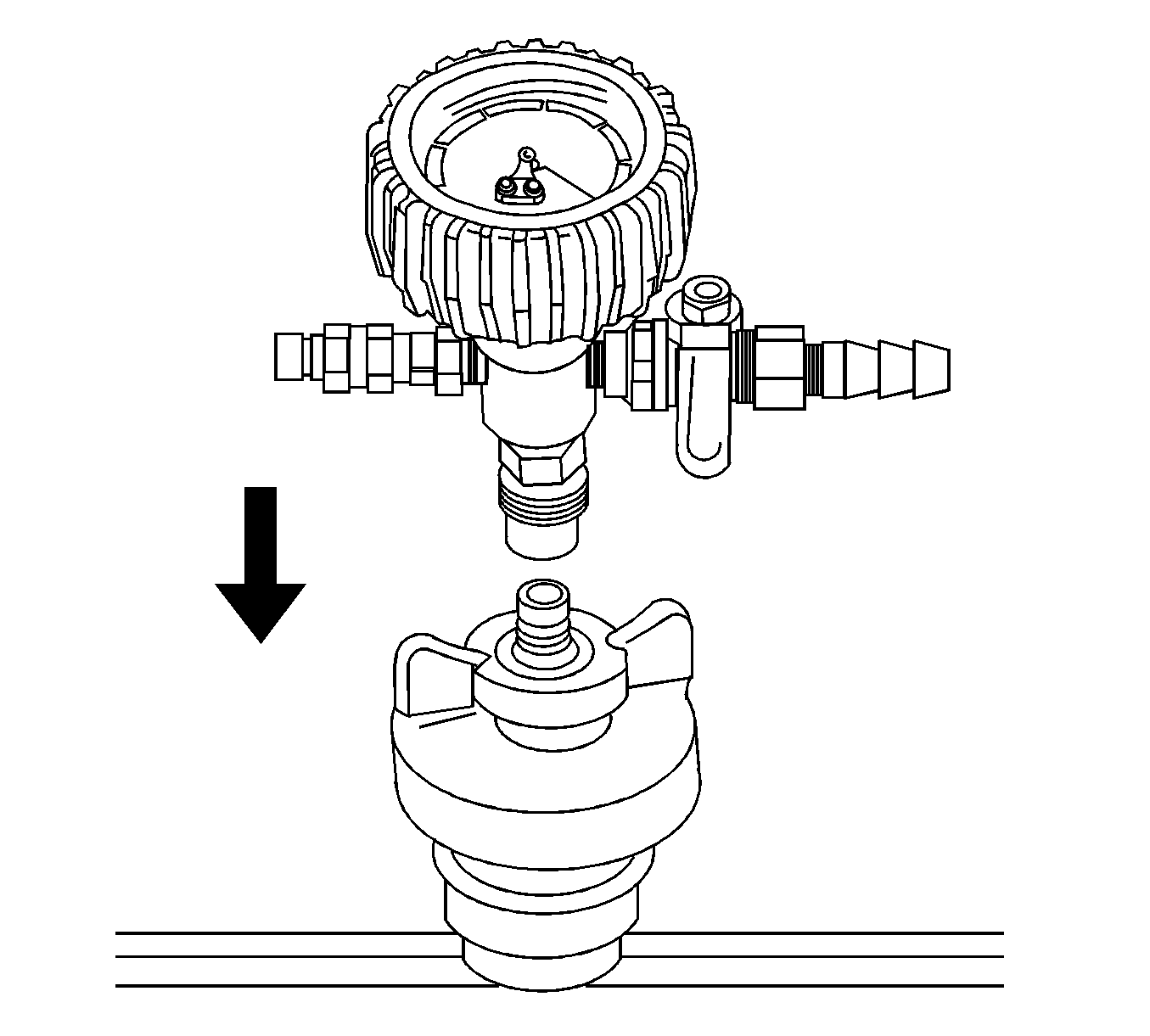
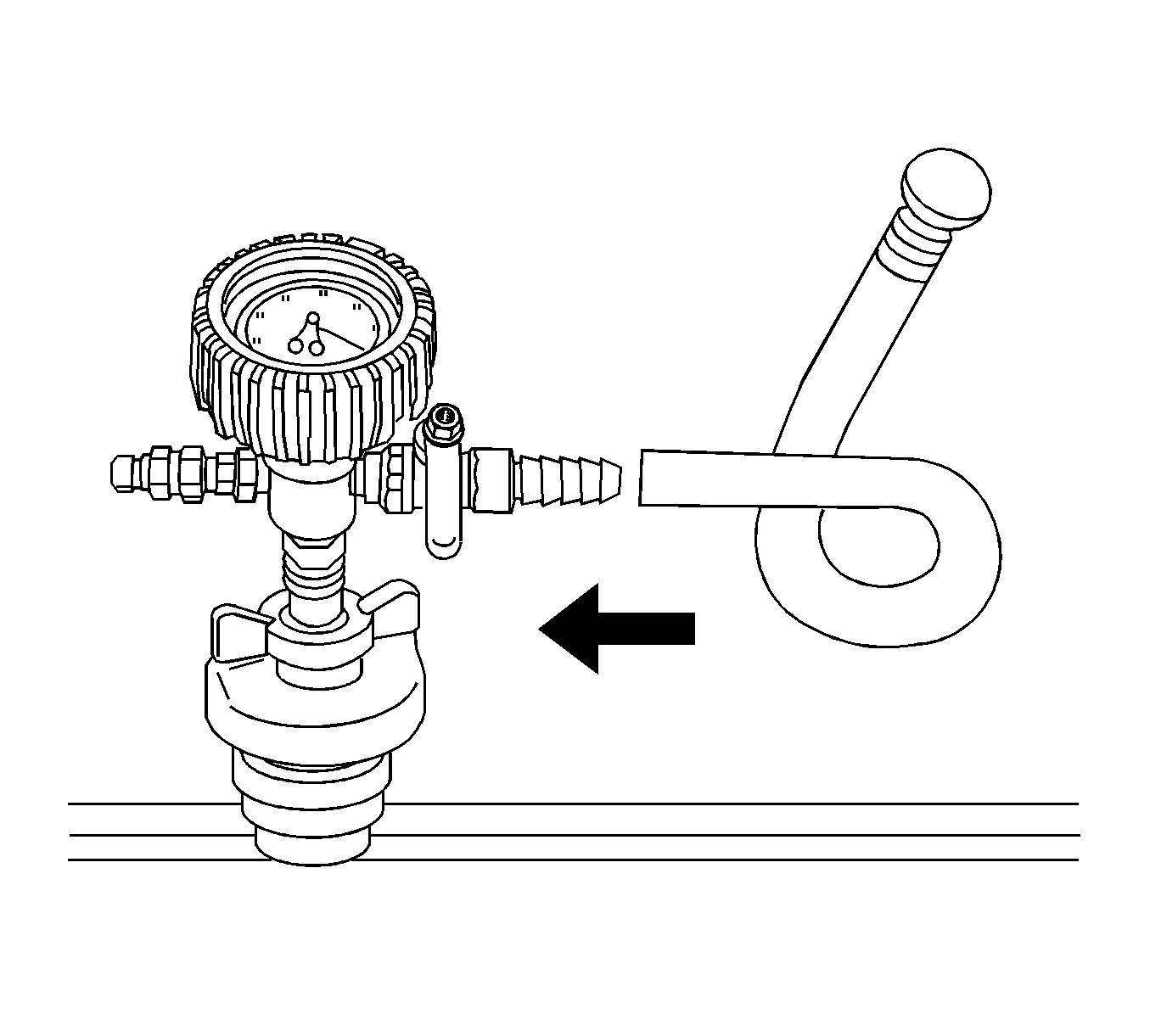
Ensure the valve is closed.
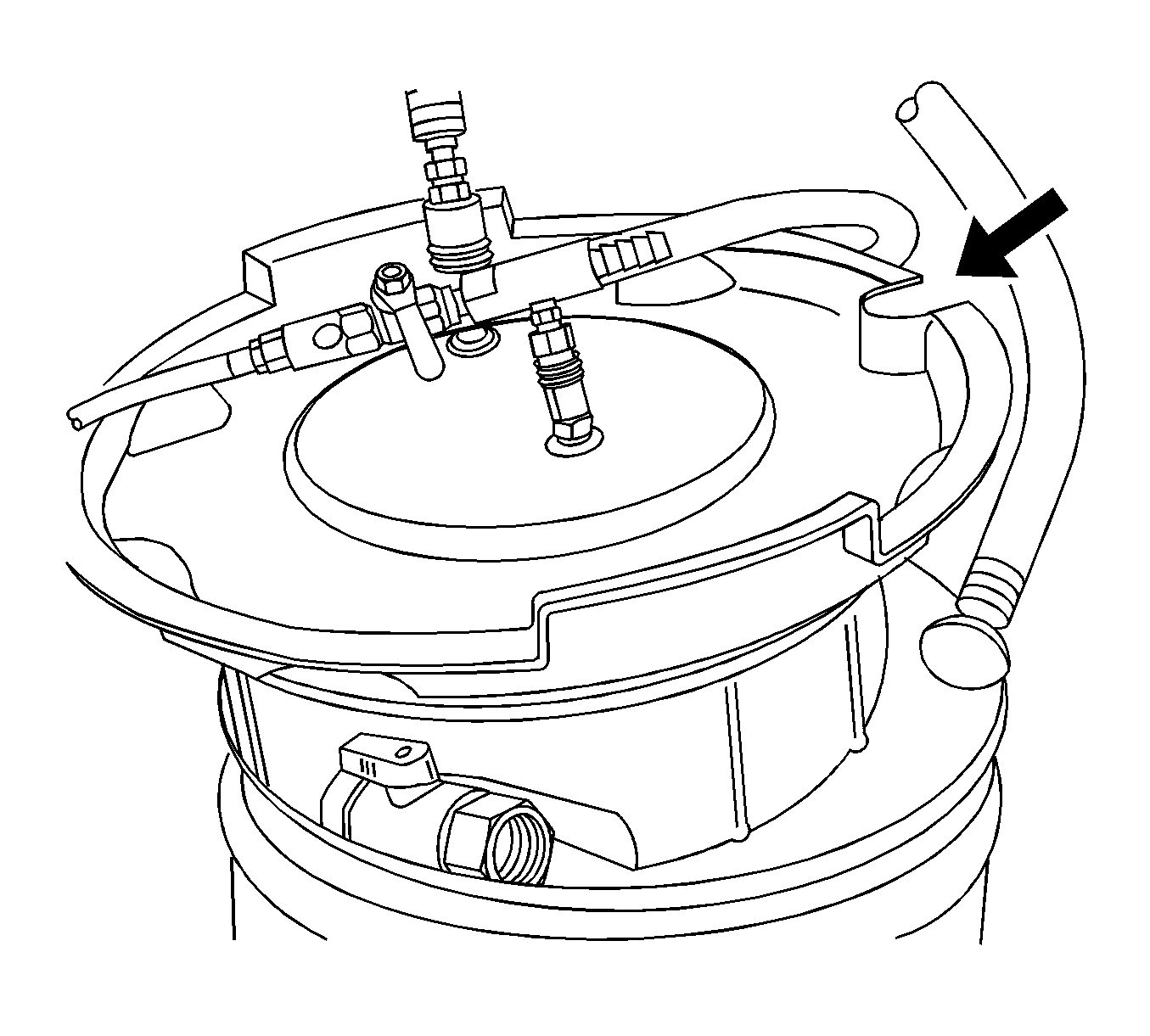
Note: Use a 50/50 mixture of DEX-COOL® antifreeze and clean, drinkable water. Always use more coolant than necessary. This will eliminate air from being drawn into the cooling system.
Note: Prior to installing the vacuum tank onto the graduated reservoir, ensure the drain valve located on the bottom of the tank is closed.

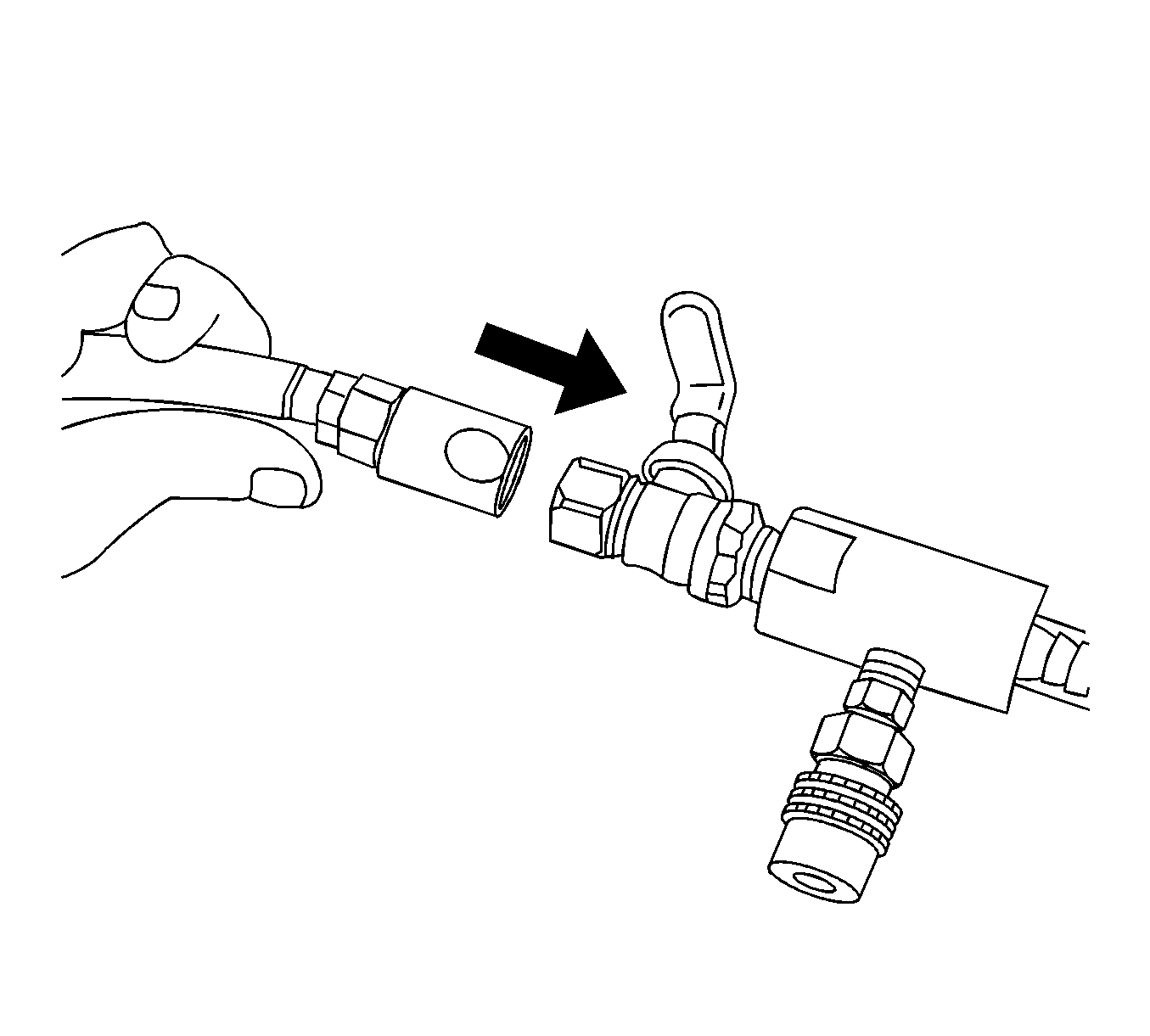
Ensure the valve on the venturi assembly is closed.
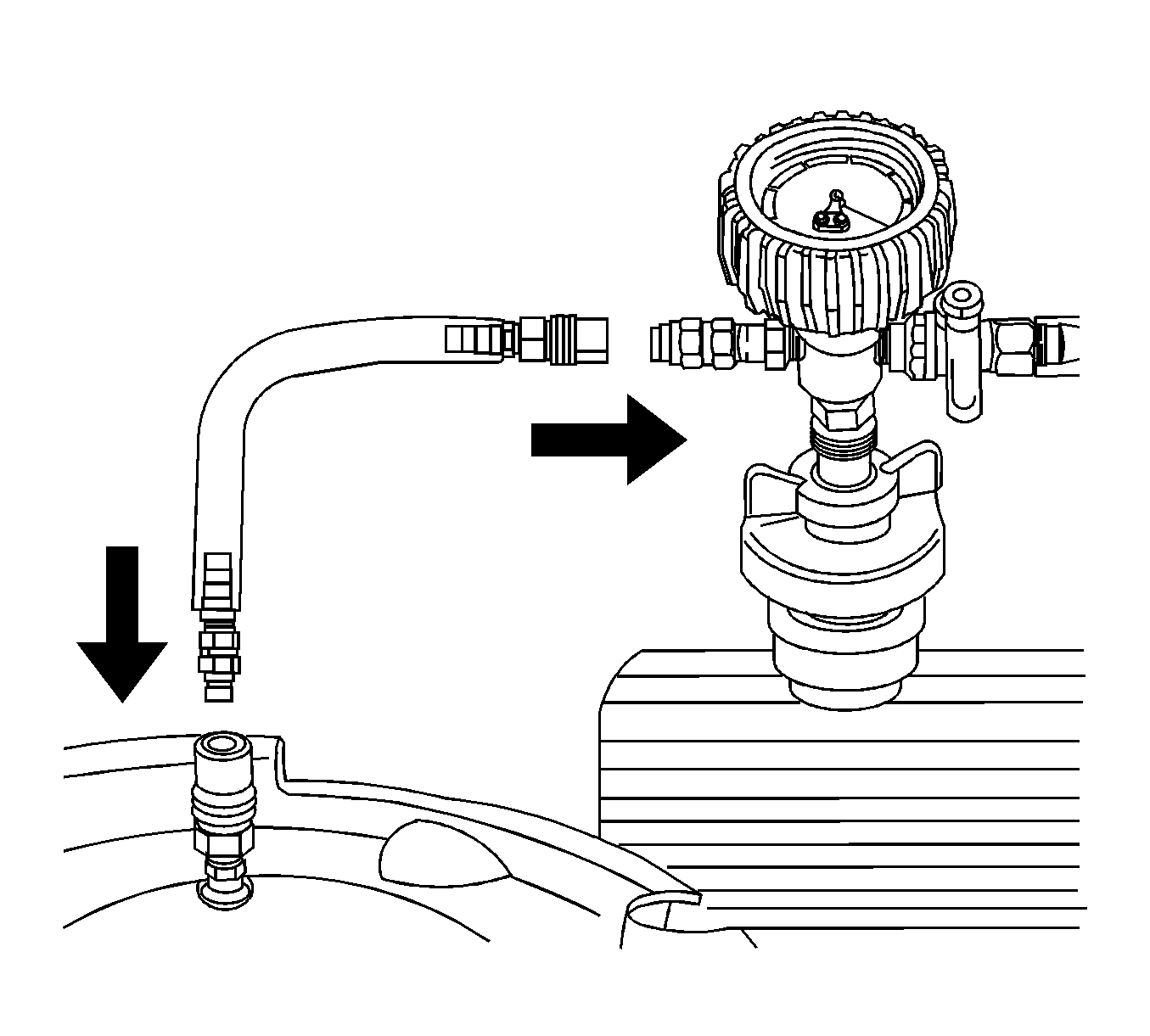

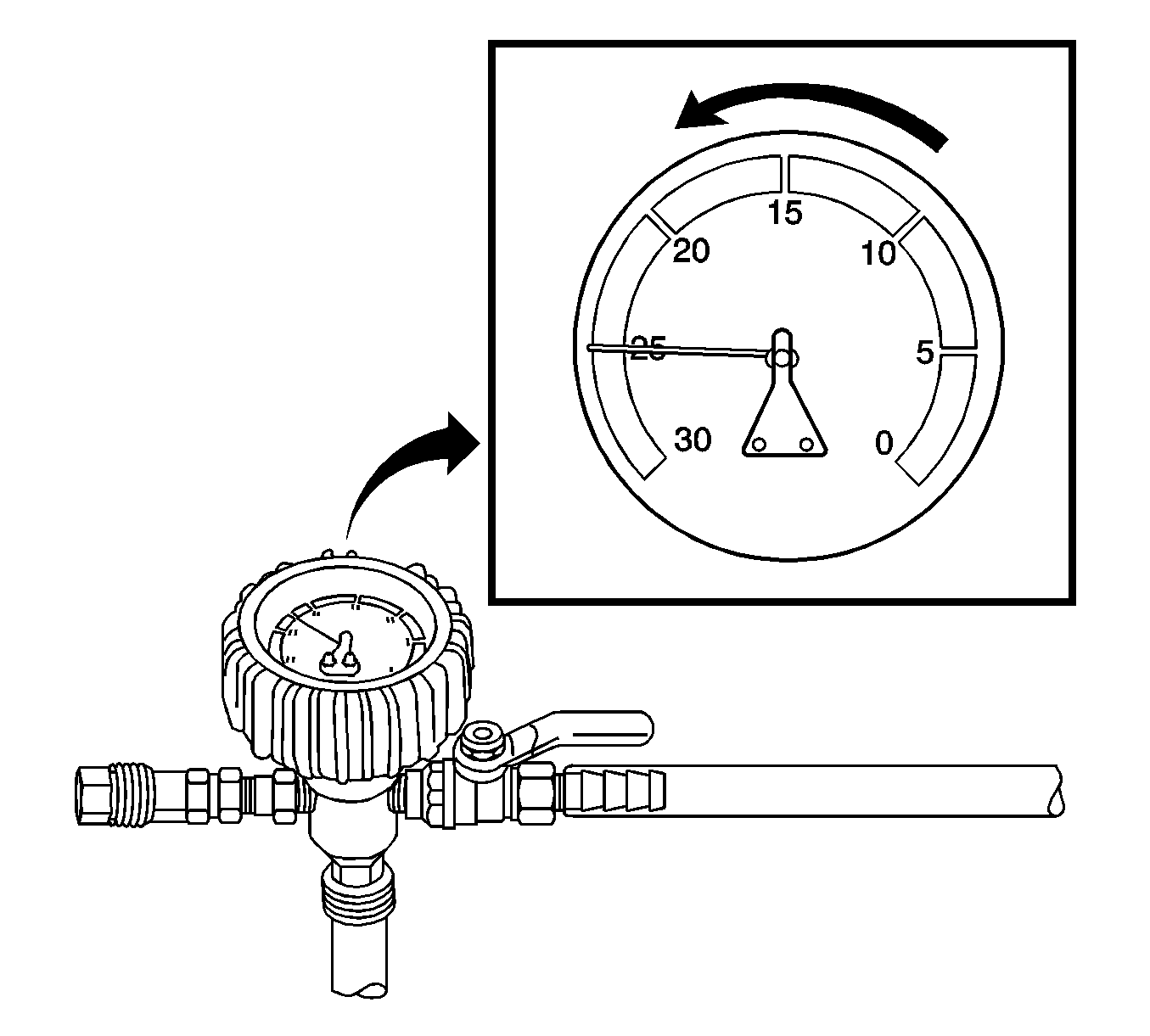
Cooling hoses may start to collapse. This is normal due to vacuum draw.
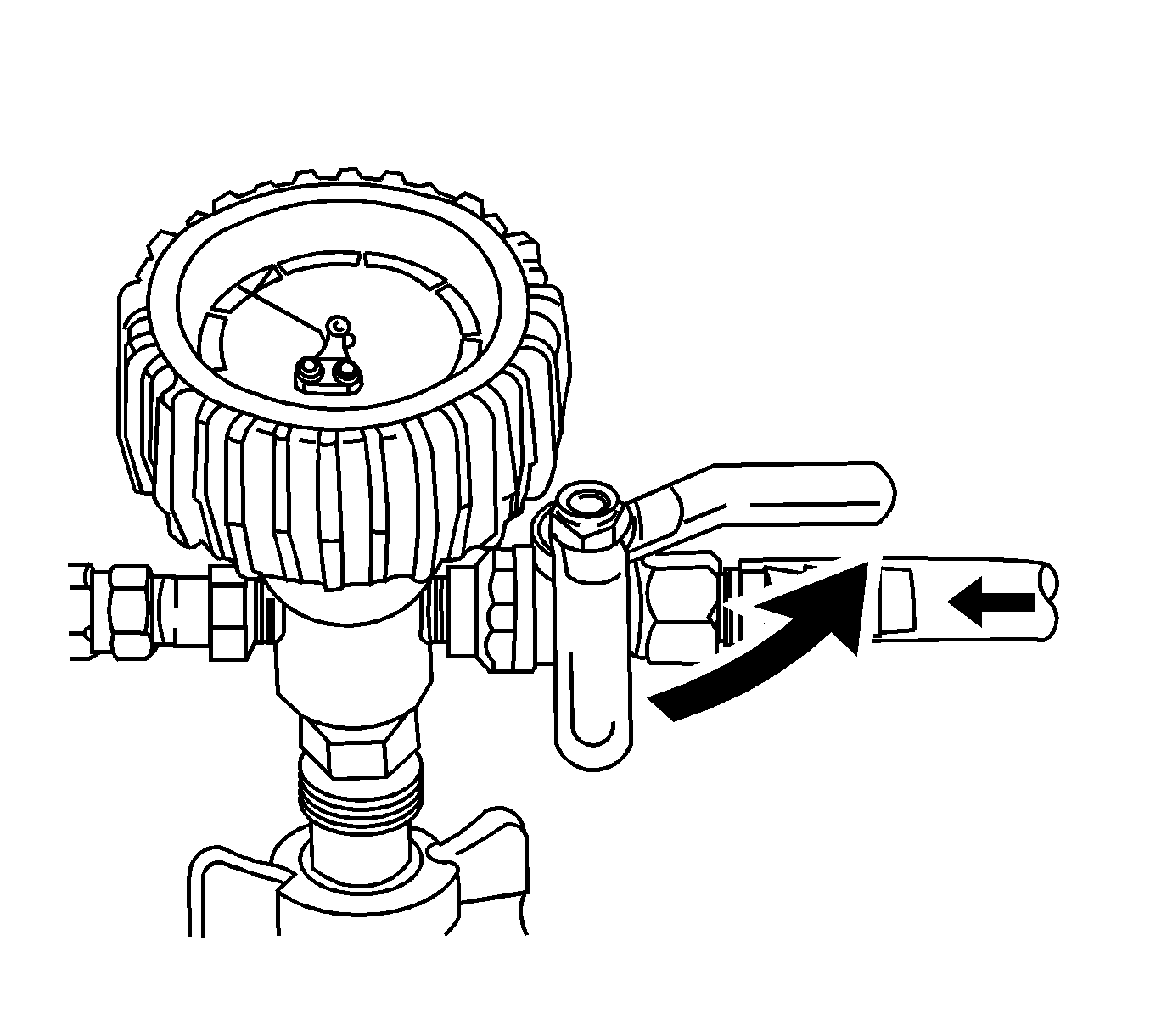
This will eliminate air from the fill hose.
If vacuum loss is observed, refer to Loss of Coolant.
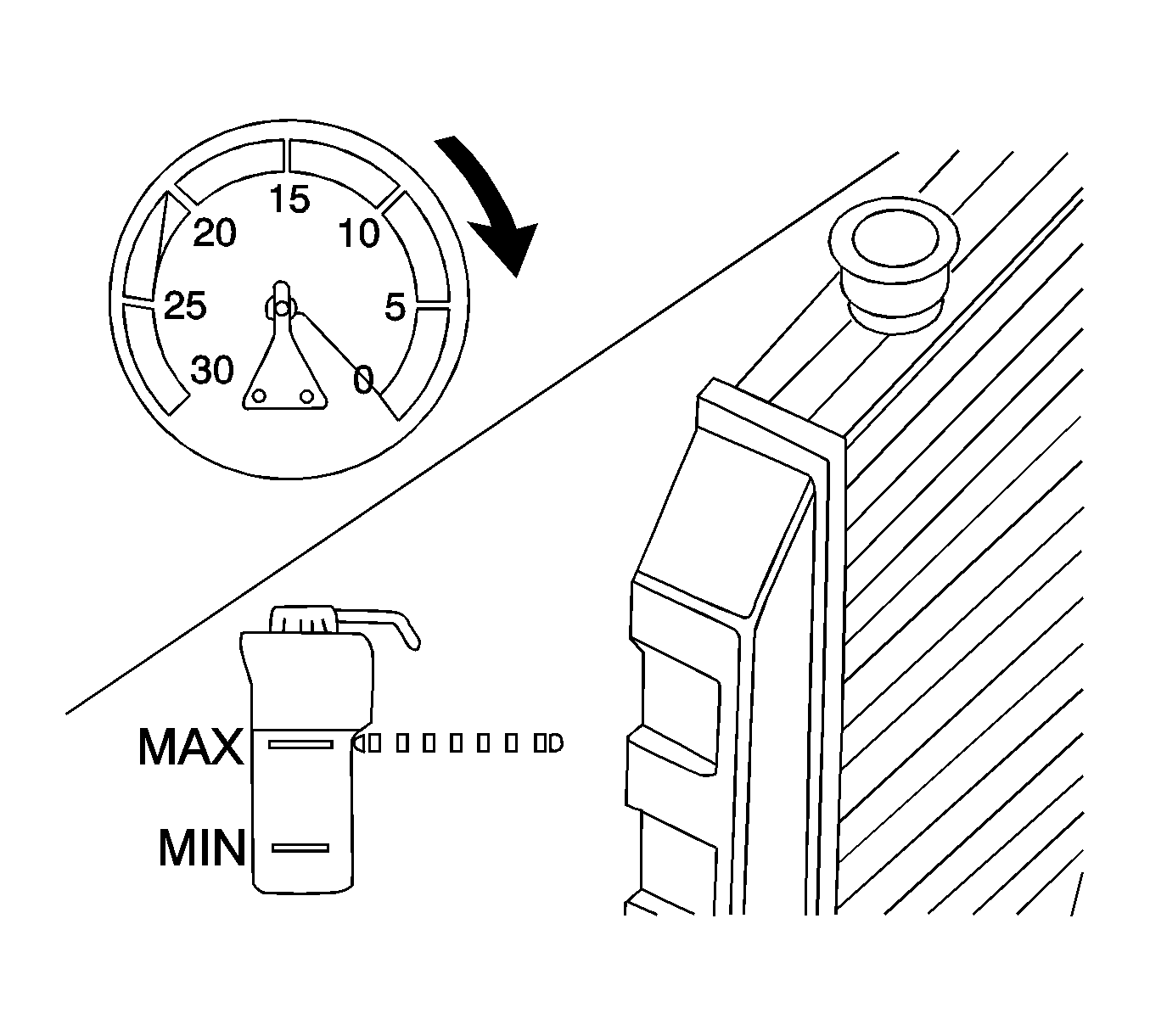
Note: After filling the cooling system, the extraction hose can be used to remove excess coolant to achieve the proper coolant level.
